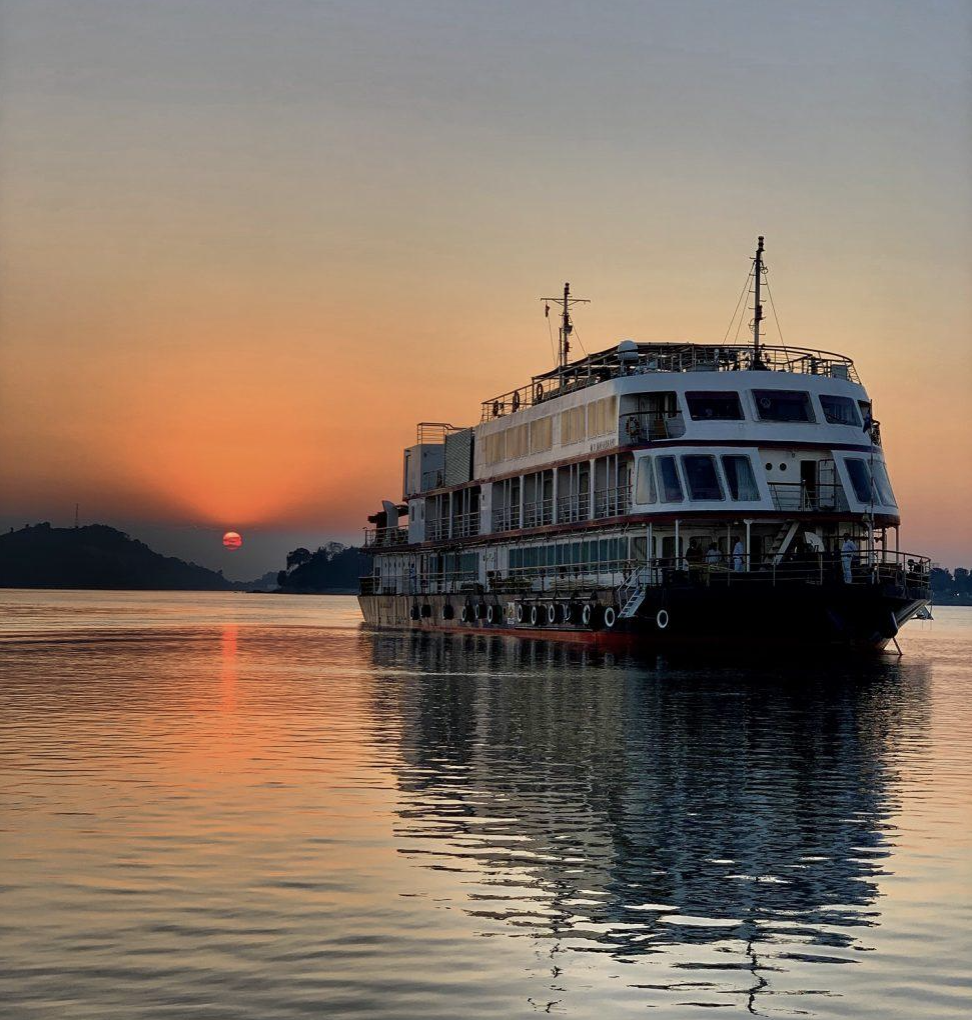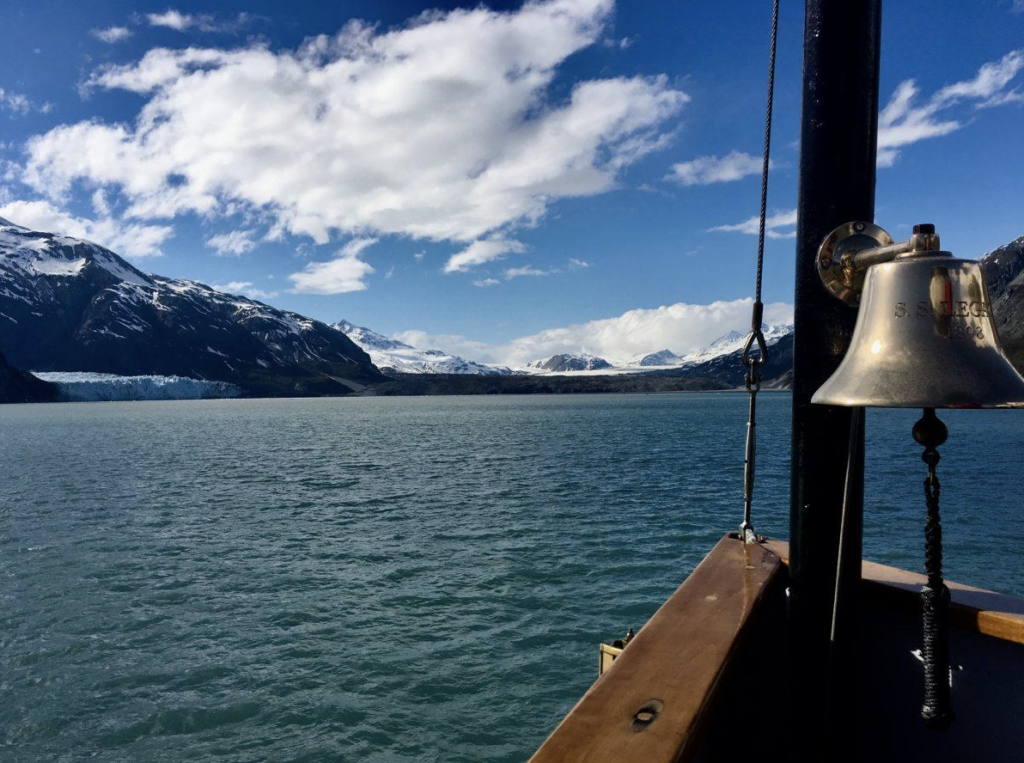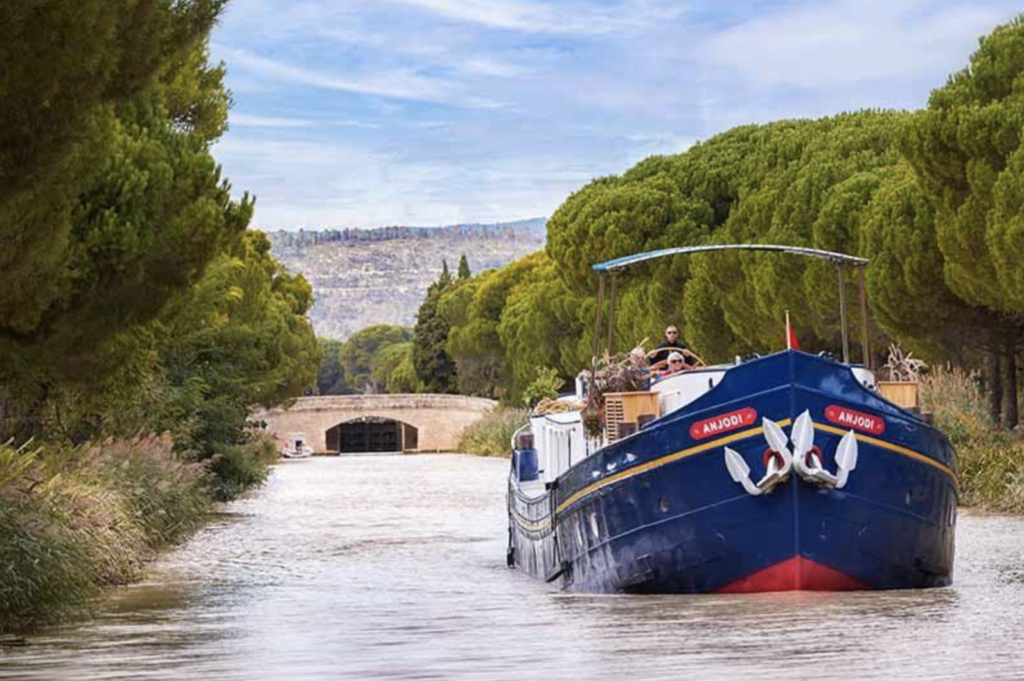Sometimes unplanned adventures are the best! This Brahmaputra River cruise in Assam, at the foothills of the Himalayas, in northeast India, came as a surprise. It turned into a blessing for our family of four and two friends. We had planned a different cruise for over a year. Pandaw Cruises canceled our Lower Ganges river expedition, but they accommodated us. They offered us a choice between a full refund or an alternative land tour.
Neither of these options interested us, however, Pandaw was happy to book us another cruise in India onboard the M.V. Mahabaahu in a different region of the country. And so our 8-day Brahmaputra River cruise in remote Northeast India began with just 12 passengers onboard!
Our cruise started from Guwahati, Assam, with Bhutan to the north, Bangladesh to the south, and Bengal to the west. As we began our journey from the airport to our cruise boat, we made a short stop at the Hindu Kamakhya Temple. The legends say the Gods Sati and Shiva met there. This site remains important to the followers of Tantra and the esoteric traditions of Hinduism and Buddhism.
Day 1: Embarkation & Peacock Island
Upon embarkation and a safety briefing we were off to Peacock Island for our first excursion. It was just a tiny tree-covered island with a small temple. Upon arrival, one outgoing Golden Langur monkey came down from the trees. It posed with us for photos before we climbed to the top of the temple.
The sun began to set while we were on the island – treating us to our first golden sunset of the cruise.
Day 2: Bangla Village
We explored a Bangla Village in Uprea in the morning. Bangla is a Muslim farming village with sprawling fields of yellow mustard seed flowers and cabbage. Cows and goats roamed freely through the village and were greeted by children like pets.
We interacted with a few villagers, and when we asked if we could take photos together. They were thrilled to be in them! The young children were excited and asked to see the photos we took. We all had a few giggles together looking at the photos on our phones.
Day 3: Relaxing Sea-day on the ship
Due to unexpectedly foggy weather, we stayed on course along the river and used this as a day to relax on the ship. Ayervedic massage was offered and I happily booked a 2-hour afternoon appointment. Compared to traditional massages I’ve had previously, the Ayervedic holistic techniques were very different, focussing on the relief of physical and emotional stress.
It was a heavenly experience, with two people applying gallons of hot essential oils and a variety of herbs throughout my massage. As I lay directly on a hard teakwood table, I felt more relaxed than I have ever felt previously during a massage, and even nodded off a couple of times.
Based on my wonderful experience, both my daughter and I booked more Ayervedic massage sessions during the cruise.
Day 4: Kaziranga National Park
Elephant-Back Safari & Jeep SafariVi
Visiting the 430-square-mile Kaziranga National Park, a UNESCO World Heritage site was one of the highlights of this cruise.
The park is home to the endangered one-horned white rhinoceros and many other species of birds and wildlife. We were informed that poaching is a major threat to the rhinos and in response a “shoot-to-kill” policy is in place, should the rangers discover poachers.
Our morning started at 3 am when we headed out in four-wheel drive vehicles to Kaziranga for an elephant-back safari experience. I was conflicted about riding on the back of an elephant, however, our guide and the Park staff convinced me that the elephants were treated very humanely and only worked for 2 hours at a time. We rode the elephants in groups of twos and threes, where we were escorted by mahouts and armed guards for the duration of the 90-minute safari. Throughout our ride, the baby elephants followed playfully around their mothers.
We saw the dew rising around the elephants legs as they made their way through the the tall golden grass, and a red sun rose on the horizon.
Throughout the safari, we saw one-horned rhinos, wild boars, deer, antelope, and buffalos in the early misty morning. The rhinos looked prehistoric with their many folds of “armour”.
In the afternoon, we set out on a Jeep safari. Unfortunately, this was a less-than-optimal experience. It was very busy in the park with domestic tourists during Christmas and New Years. Dozens of jeeps following each other very closely along the roads created a bit of chaos and a lot of dust.
Tea & Jute
There was an Assamese dance performance with colourful costumes at a tea plantation we stopped at on our way back to the ship. The workers came in from the fields to watch the performance with us.
We also visited a Jute factory that dated back to 1959. We had to wear makes and ear plugs, but I can still imagine the factory operating in the earlier times with its archaic softening, spinning, twisting and spool-winding equipment. This particular factory employs over 300 men, and while they can mechanize the jute production, maintaining the old ways helps support local communities and workers, many of whom have worked in the factory for a lifetime.
PUT IN PICTURE OF JUTE FACTORY HERE ***
Day 5: Bishwanath Ghat & Boat Safari
We visited Bishwanath Ghat, a weaving village with looms in almost every house. Children played happily in the dusty laneways and gave us a very warm welcome, walking with us as we made our way from home to home.
The villagers produced bright-coloured textiles that were on display. Many of us tired on the clothing and fabrics before choosing purchases.
We had another opportunity to explore the eastern range of the Kaziranga National Park on a boat safari. The naturalist, Mayuresh, mentioned a few months previously, he had spotted a tiger at the base of the steep cliffs.
While I remained hopeful about seeing a tiger, we only saw birds, deer and buffalos as we cruised upstream against strong currents.
As the night approached, we anchored and made a campfire at a large sandbank. We were welcomed to “the island” at the sandbank with drinks, music and a barbecue.
It was a magical night! Under the stars, we played charades, sang and swayed to the music, before releasing traditional fire lanterns into the river after making a wish.
Day 6: Mishing Village
We visited the Mishing Village, one of the two unique places on our last couple of days. Sturdy bamboo homes on stilts and community structures surrounded us. The Mishing are followers of the Donyi-Polo animistic worship, and their ancestry traces back to Tibet.
At the centre of the village, we watched a demonstration on tying traditional Mishing clothing. The villagers rejoiced as they dressed my 34-year-old son in a dhoti and kurta, adding a red and white traditional scarf, while the entire village watched. For the rest of the day, the children followed him around treating him like a movie star! I’m pretty sure this was the highlight of the trip for my son.
In the evening, we enjoyed a traditional Assamese-themed celebration, outfitted in local garb, we danced the night away after our bellies were full from the Assamese dinner including maasai tinga (fish curry) and baanhgajor lagos kukura (chicken with bamboo shoots). I wore a stunning lime green silk Mekhela Chaadar Sari, and my daughter wore a rich red and purple one!
Day 7: Majuli Island & Sivasagar
With a busy morning on our last day of sailing, we visited Majuli Island for immersion into the Neo-Vaishnav Hindu sect that calls the island home. On the way, we exchanged waves with a crowded ferry carrying cars, trucks, food, cargo between the mainland and the island.

Throughout the morning, we learned about the island’s many different dance forms and philosophies, and at the Kamalabari Satra temple, we watched a complex and intriguing dance and drumming performance by priests called “Gayan Bayan.”
In the afternoon, we took a five-hour excursion by land to visit Sivasagar and learned about the history of the Ahom Kingdom, ruling for over 600 years in Assam.
We climbed the Sivasagar Savadol structure, built by the Ahoms, which offered a view of the surrounding streets leading to a temple. As we entered the ancient temple, they tied blessing strings to our wrists.
We returned to the ship for cocktails and a farewell dinner. Mayuresh, our guide and photographer put together a beautiful and moving video of our cruise.
Day 8: Time to Say Goodbye
We bid a fond farewell to the crew and staff on the M.V. Mahabaahu before departing for our final stop at a tea plantation. Following an in-depth presentation on tea production by a Tea Master, we had a delicious home made meal and toured the property with the owners of the plantation. I learned that Assamese tea is distributed all over the world. We then drove to the Jorhat Military Airport for our flight to Delhi.

Although this wasn’t the Lower Ganges cruise that we initially booked, this Brahmaputra cruise was exceptional and unforgettable. It was a privilege to unexpectedly get a glimpse of this peaceful, geographically beautiful, vibrant, and uncrowded region that was not on our radar. The Indian staff, who were intimately familiar with life on Brahmaputra, made us feel welcome on this slow cruise, sharing stories about the gentle people in the villages, the history of the region, and the challenges of navigating the fast moving currents and shifting sands of the river.
I am looking forward to revisiting this part of India again!



